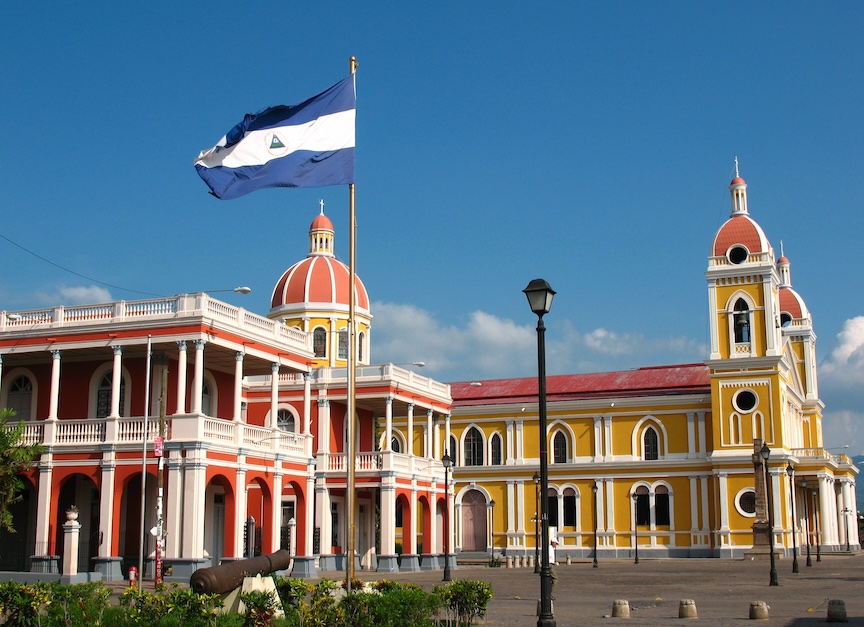
Plaza de la Independencia en Granada, Nicaragua by José Porras
Free elections were held in Nicaragua. Violetta Chamorro, owner of the opposition newspaper "La Prensa," led a broad spectrum of opposition to the Sandinistas. She won the election.
In 1990, Nicaragua witnessed a historic political shift as free elections were held, marking a significant moment in the country's turbulent history. The elections came after years of civil unrest, economic turmoil, and international pressure, which culminated in the rise of a formidable opposition led by Violeta Barrios de Chamorro, a figurehead for change and the owner of the opposition newspaper *La Prensa*.
The Sandinista National Liberation Front (FSLN), led by President Daniel Ortega, had been in power since the Nicaraguan Revolution of 1979. The Sandinistas, initially celebrated for overthrowing the Somoza dictatorship, gradually faced increasing criticism both domestically and internationally. The economy suffered under their rule, partly due to the U.S.-backed Contra war and a crippling trade embargo imposed by the United States. The civil conflict and economic hardships led to widespread dissatisfaction among the Nicaraguan population, paving the way for opposition movements to gain traction.
Violeta Chamorro emerged as a key figure in this opposition. She was not only the owner of *La Prensa,* one of Nicaragua's most influential newspapers, but also the widow of Pedro Joaquín Chamorro, a respected journalist and vocal critic of the Somoza regime who was assassinated in 1978. His death had sparked widespread protests against the dictatorship, contributing to the eventual rise of the Sandinistas. Violeta Chamorro's connection to this legacy gave her a significant moral authority and made her a symbol of resistance against oppressive rule.
Chamorro led a broad coalition of opposition groups known as the National Opposition Union (UNO). This coalition was diverse, encompassing 14 different political parties ranging from conservative to socialist ideologies. Despite their ideological differences, these groups were united in their goal of ending Sandinista rule and restoring democracy to Nicaragua. Chamorro, with her moderate and unifying appeal, became the presidential candidate for the UNO, offering a stark contrast to the revolutionary rhetoric of the Sandinistas.
The 1990 election campaign was intense and heavily contested. The Sandinistas, confident in their revolutionary achievements and popular support, believed they would secure victory. However, the prolonged economic difficulties, the exhaustion from years of conflict, and the desire for peace and stability among the population worked in Chamorro's favor. Moreover, the elections were closely monitored by international observers, ensuring that the process was transparent and fair.
On February 25, 1990, Nicaraguans went to the polls in what became a landmark moment for the country. Violeta Chamorro won the election with approximately 55% of the vote, decisively defeating Daniel Ortega. Her victory was a clear mandate for change, reflecting the people's desire for peace, economic recovery, and political freedom.
Chamorro's election as the first female president in the Americas marked the end of over a decade of Sandinista rule. Her presidency was characterized by efforts to rebuild the war-torn economy, reconcile a divided society, and establish democratic institutions. Although her term faced significant challenges, including managing the remnants of the Contra war and addressing deep economic issues, Chamorro is remembered for her role in restoring democracy to Nicaragua.
 >
>